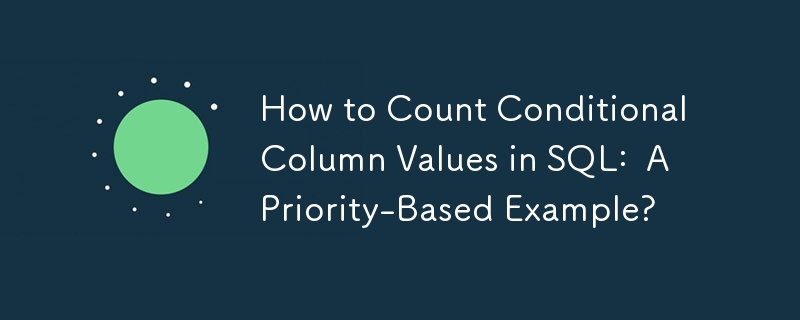Found a total of 10000 related content
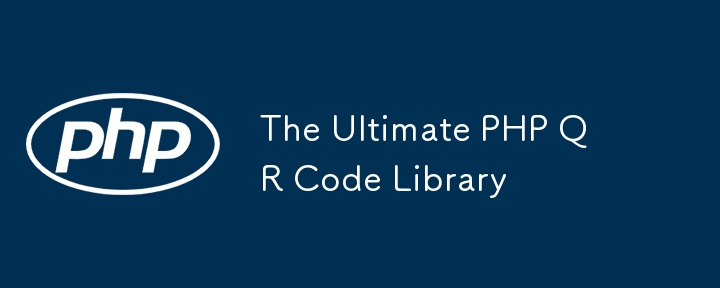
The Ultimate PHP QR Code Library
Article Introduction:HeroQR: Your dream PHP QR code generation library. Are you still worried about QR code generation in PHP? Don't hesitate any longer! ?I am pleased to introduce you to HeroQR, an advanced open source PHP library designed to make QR code generation easy, powerful and flexible. Why choose HeroQR? HeroQR stands out for its customizability and ease of use. Whether you're a beginner looking for a simple QR code solution or an experienced developer in need of advanced features, HeroQR has what you need. Main Features of HeroQR HeroQR is designed to provide developers with powerful tools to create and customize QR codes. Here’s a quick overview of its standout features: Unparalleled customization with resizable additions
2025-01-15
comment 0
909

Yii: A Strong Framework for Web Development
Article Introduction:Yii is a high-performance PHP framework designed for fast development and efficient code generation. Its core features include: MVC architecture: Yii adopts MVC architecture to help developers separate application logic and make the code easier to maintain and expand. Componentization and code generation: Through componentization and code generation, Yii reduces the repetitive work of developers and improves development efficiency. Performance Optimization: Yii uses latency loading and caching technologies to ensure efficient operation under high loads and provides powerful ORM capabilities to simplify database operations.
2025-04-15
comment 0
833

Laravel: A Framework for Modern Web Development
Article Introduction:Laravel is a modern PHP-based framework that follows the MVC architecture model, provides rich tools and functions, and simplifies the web development process. 1) It contains EloquentORM for database interaction, 2) Artisan command line interface for fast code generation, 3) Blade template engine for efficient view development, 4) Powerful routing system for defining URL structure, 5) Authentication system for user management, 6) Event listening and broadcast for real-time functions, 7) Cache and queue systems for performance optimization, making it easier and more efficient to build and maintain modern web applications.
2025-04-18
comment 0
841

Yii: An Introduction to the High-Performance PHP Framework
Article Introduction:Yii is a high-performance PHP framework suitable for rapid development of web applications. Its core concepts include: Component-based design: Yii provides rich components and extensions, supports automatic code generation, and improves development efficiency. MVC architecture: adopts the design concept of "convention is better than configuration" to improve operational efficiency. Cache and database support: Provides powerful caching mechanisms and database operations to optimize application performance.
2025-04-18
comment 0
1141

Essential PHP Commenting Tips
Article Introduction:Comments are crucial in PHP development, and reasonable comments can improve code readability and maintenance. When choosing annotation method, 1. Single-line comments (// or #) are suitable for explaining single-line code or temporary blocking code; 2. Multi-line comments (/.../) are suitable for explaining function, class or file header information, but nested use should be avoided. 3. It is recommended to write DocBlock comments for functions and classes to clarify the purpose, parameters and return values to support IDE prompts and document generation. 4. Comments need to be modified synchronously as the code is updated to delete useless comments to prevent misleading. 5. Complex logic should be explained "why" rather than just describing operations. 6. The comments should be concise and clear, avoid lengthy and nonsense, and it is recommended to use Chinese writing. Although good annotation habits are small, they can significantly improve the quality of the code
2025-07-18
comment 0
576

The Ultimate Guide to PHPDoc and PHP DocBlocks
Article Introduction:PHPDoc and DocBlock are standard formats and multi-line comment blocks used in PHP development for annotating code. They improve code readability and maintenance through tags such as @param, @return, etc. 1. They help enhance code readability and facilitate team collaboration; 2. Improve IDE's intelligent prompt functions, such as automatic completion and parameter prompts; 3. Support generation of API documents for easy connection; 4. Provide type information for static analysis tools and strengthen code inspection. Common tags include @param describing parameters, @return indicating the return value, @var annotation of variable type, @throws indicating possible exceptions, @deprecated marks discarded elements, @see and @link provide the
2025-07-17
comment 0
249

What is the purpose of Gii in Yii?
Article Introduction:Gii is a powerful code generation tool in the Yii framework, which accelerates the development process by generating boilerplate code based on database structure or input parameters. Specifically, Gii can generate ActiveRecord models, create controllers containing CRUD operations, build corresponding views, and help build components such as modules and forms. To enable Gii, add 'gii' to the 'bootstrap' array in the configuration file config/web.php, and configure its class and access restricted IP in the 'modules' section. Gii helps keep code consistency and conforms to Yii best practices and is suitable for quickly building data-intensive applications such as CMS or management panels. Although the generated code is a skeleton,
2025-07-15
comment 0
352
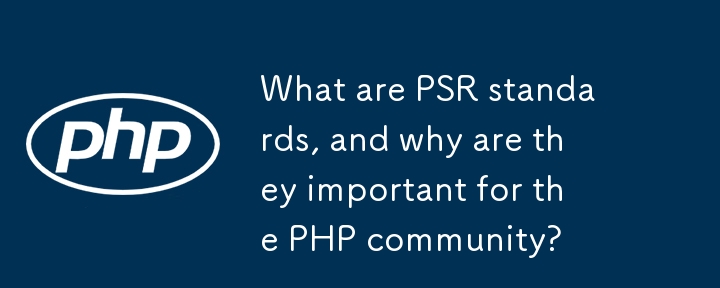
What are PSR standards, and why are they important for the PHP community?
Article Introduction:PSR (PHP Standard Recommendation) is a coding specification formulated by PHP-FIG, aiming to improve compatibility and collaboration efficiency in PHP development. Its core purpose is to make the code between different frameworks and projects easier to read and maintain by unifying code style, structure and automatic loading standards. The main PSRs include: ① PSR-1 basic coding standard; ② PSR-4 automatic loading standard; ③ PSR-12 extended code style guide. Application methods include: ① Use PHPCS or PHP-CS-Fixer for code inspection; ② Set the pre-commit hook to ensure the code is neat; ③ Follow the naming and directory structure specifications; ④ Use PascalCase class name and camelCase method name. Common misunderstandings such as mixing tab characters and empty
2025-06-17
comment 0
304

PHP: Writing Multi-Line Code Comments
Article Introduction:PHP multi-line comments use // wrap content, suitable for explanation logic or blocked code; it is recommended that PHPDoc style be used for function and class comments to improve IDE recognition and development efficiency; comments should be clear and useful, avoid redundancy, and focus on explaining the reasons for implementation rather than the operation itself. For example: / comment content/or /*PHPDoc comments/defines function parameters and return values, and pay attention to closing symbols to avoid syntax errors. Good comments need to be combined with context to help understand complex logic or special handling methods.
2025-07-16
comment 0
223
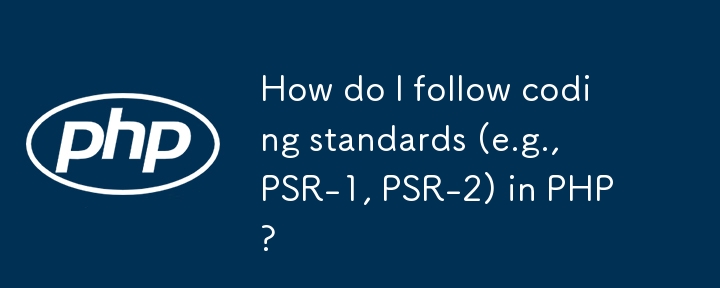
How do I follow coding standards (e.g., PSR-1, PSR-2) in PHP?
Article Introduction:Complying with PSR-1 and PSR-2 standards is crucial for PHP project development. 1. Use code formatting tools such as PHP-CS-Fixer and PHP_CodeSniffer to automatically handle code style issues and integrate them into IDE or CI processes; 2. Comply with the basic naming and structural rules in PSR-1, including the naming method of using the correct PHP tags, class names and method names; 3. Follow the code structure details in PSR-2, such as controlling spaces after structural keywords, left curly braces and 4 space indentation; 4. Unify the encoding style in the project, ensure consistency through .editorconfig files, and write specifications to README or contribution guide to support team collaboration. These practices
2025-06-26
comment 0
1000

What are model factories in Laravel?
Article Introduction:Modelfactories are used in Laravel to quickly generate test data to improve development efficiency and test quality. It defines model data generation rules, allowing developers to quickly create test data that meets their needs. The steps to use include: 1. Generate the factory class through the Artisan command; 2. Define the field value in the definition() method; 3. Call factory to create data in the test or seeder; 4. Optionally define the state to temporarily modify the field value. Its advantages are to reduce duplicate code, generate real data, facilitate test boundary conditions, facilitate maintenance, and are suitable for unit testing, database filling, demonstration environment and debugging functions.
2025-07-18
comment 0
164
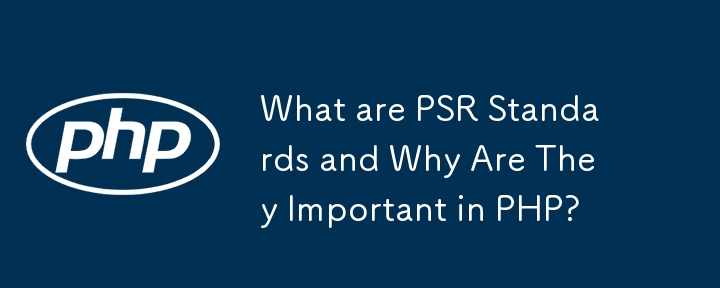
What are PSR Standards and Why Are They Important in PHP?
Article Introduction:PSR is a PHP standard recommendation, formulated by the PHP framework interoperability group, aiming to improve code consistency, readability and cross-frame compatibility. Common standards include: 1. Basic PSR-1 specifications, such as labels and naming conventions; 2. PSR-4 automatic loading standards, defining class and path mapping; 3. PSR-12 extended coding style, refined format rules; 4. PSR-3 log interface, supporting log library replacement; 5. PSR-7 HTTP message interface, convenient for middleware and API development. Its value is reflected in improving multi-project collaboration efficiency, enhancing tool support, simplifying integration, and improving code expertise. Application methods include using Composer to configure PSR-4, automatically format code with the help of tools, and manually following PSR
2025-07-10
comment 0
304
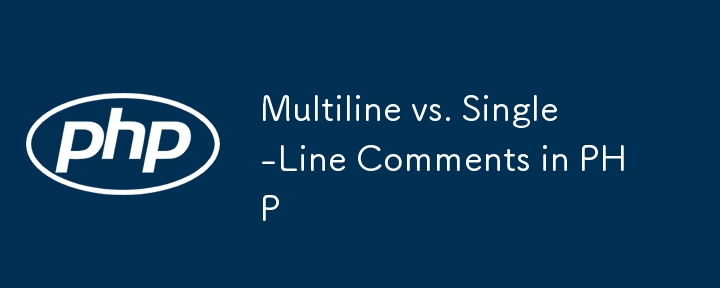
Multiline vs. Single-Line Comments in PHP
Article Introduction:Single-line comments are suitable for quick descriptions, and multi-line comments are suitable for detailed descriptions. Single-line comments start with // or #, which are suitable for brief explanation of code lines and logical branch descriptions, but are not suitable for piled up into paragraphs or used in functions and file headers; multi-line comments are wrapped with /.../, suitable for detailed explanation of complex functions, parameter meanings or file uses, and are often used in API documents and class descriptions, and can be used with document generation tools; in actual development, flexibly switched according to the context, such as multi-line comments at the top of the function, internal logic uses single-line comments to explain the conditions, and single-line comments are used to block the code during debugging, and unified specifications can be agreed upon in team collaboration. Multi-line comments are often used to write copyright statements at the head of the file. Single-line comments can be used to quickly comment variable assignments during debugging, so that multiple lines are preferred when using nesting problems
2025-07-18
comment 0
928

php add hours to datetime
Article Introduction:In PHP, you can add hours to date and time by using the DateTime class with the modify() or add() method. Use the modify() method to pass in string parameters similar to '3hours' to directly modify the original object, which is suitable for simple adjustment; if you do not want to change the original object, you need to clone it before operating; use the add() method, you need to cooperate with the DateInterval object, such as 'PT2H', which means adding two hours, which is more suitable for structured development; when processing time zones, DateTimeZone should be set to ensure accuracy; for old versions of PHP, you can use strtotime() to implement it, but it is not recommended for complex logic. Choosing the right method to keep the code clear is key.
2025-07-08
comment 0
649
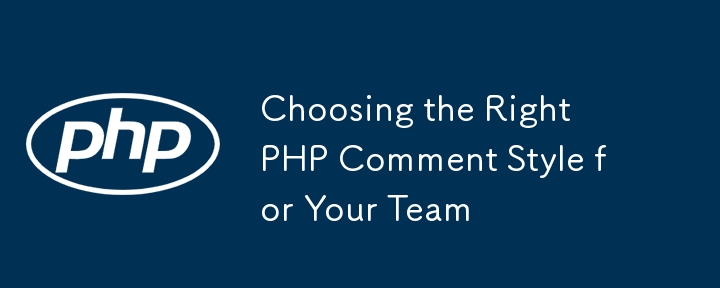
Choosing the Right PHP Comment Style for Your Team
Article Introduction:In team collaboration development, choosing the right PHP annotation style can improve code readability, maintenance efficiency and communication costs. 1. Use single-line comments (// or #) to suit short descriptions, which are used to explain the meaning of variables or temporary notes. It is recommended to use local explanations and quick debugging inside the function. 2. Multi-line comments (//) are suitable for blocking large pieces of code or writing detailed logical descriptions. They can be used to close code blocks or comment deprecated functions during debugging, but be careful not to use them in nest. 3. Document comments (/*/) are standard for team collaboration, and support IDE prompts and automatic document generation, which are suitable for key information descriptions such as function usage and parameter types. In addition, the team should unify the annotation style and keep it updated to avoid mixing formats or ignoring modified synchronization. The annotation should focus on complex logic.
2025-07-16
comment 0
161

How to use collections in Laravel?
Article Introduction:Laravel collection is an advanced encapsulation of PHP arrays, providing chained calling methods to process data. It is implemented through the Illuminate\Support\Collection class, simplifying filtering, mapping, sorting and other operations. For example, filtering users older than 25 and sorting by name requires only one line of code. Common uses include: 1. Create a collection through collect() function or model query; 2. Use map(), filter(), pluck() and other methods to process data; 3. Support chain calls to improve code readability; 4. Pay attention to collection immutability, return value type and how to use it in Blade templates. Mastering these techniques can significantly improve development efficiency.
2025-07-24
comment 0
733
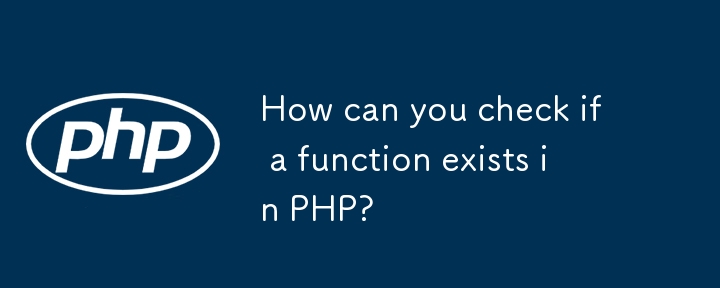
How can you check if a function exists in PHP?
Article Introduction:To check whether the function in PHP exists, the function_exists() function is mainly used. 1. function_exists() receives a string parameter to determine whether the specified function has been defined; 2. This method is valid for both user-defined functions and built-in functions; 3. The function name is case-insensitive when judging; 4. It is often used in scenarios such as plug-in development, conditional execution, and maintaining backward compatibility; 5. In object-oriented programming, method_exists() and class_exists() should be used to check whether the method and class exist respectively. These functions help avoid fatal errors and improve code robustness and flexibility.
2025-07-21
comment 0
896
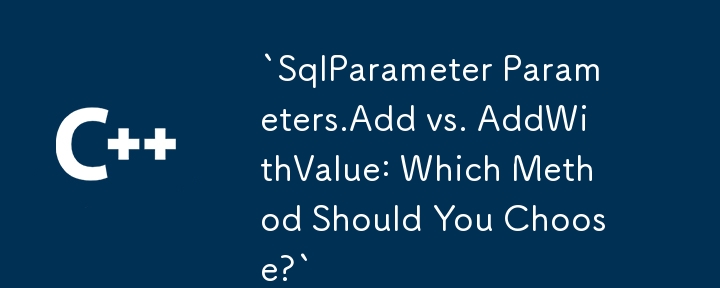

Dave The Diver: How To Catch Spider Crabs
Article Introduction:In Dave The Diver, there are some creatures that are not easy to catch. Or, catch alive that is. The spider crab is one of those very species, making it seem like the only way to bring these crustaceans back up to land is to viciously crack them up w
2025-01-10
comment 0
864



















